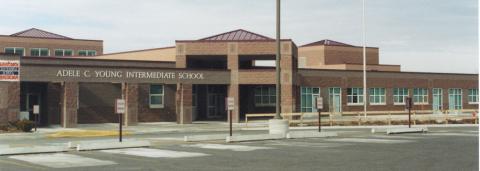
Parents in Utah Place High Value on Afterschool Programs,
But the State Ranks Among Bottom 10 for Afterschool
Unmet Demand for Afterschool Programs in the State is High
Washington, DC — Utah has made little progress on afterschool participation since 2009, according to a new household survey commissioned by the Afterschool Alliance. The 2014 edition of America After 3PM found that demand for afterschool programs still far exceeds supply; the number of children in Utah who would be enrolled in an afterschool program if one were available surpasses the number of children enrolled in afterschool programs in the state. The household survey also found that the vast majority of parents of children in afterschool programs in Utah report significant benefits from their children’s participation.
The America After 3PM survey included 30,000 American households and 202 in-depth interviews in Utah. It found that 10 percent of Utah students, 57,686 children in all, are enrolled in afterschool programs, essentially unchanged from 9 percent in 2009, when the survey was last conducted. But 99,148 Utah students are still without adult supervision in the afternoons. The parents of 257,482 Utah children not already in an afterschool program say they would enroll their child if a program were available.
“Afterschool providers and advocates in the state are working tirelessly to provide quality afterschool programs to as many children and families as resources will allow,” said Afterschool Alliance Executive Director Jodi Grant. “But Utah has a lot of work ahead if it’s to keep up with other states, and even more if it is to provide all children with the afterschool opportunities they need. Most parents in the state who want their child in a program can’t find one, and that needs to change. Every child who is unsupervised after school is a child potentially at risk. Quality afterschool programs keep kids safe, inspire them to learn, and help working families. Every Utah family that needs an afterschool program should have access to one.”
“This year public funding for afterschool increased by 30 percent in Utah. I am grateful to the Utah Legislature for demonstrating an understanding of the role that afterschool programs play in preparing youth for academic and career success while developing healthy interpersonal relationships,” said Lynette Rasumussen, Executive Director of Utah Afterschool Network. “Of course, there is more to be done. There are still too many parents in the state who want their child in a program, but can’t find one that works for them, increasing the opportunity and achievement gap among youth. Utah’s families clearly understand the value of afterschool programs and we need to make sure more families have access to one. Continuing to improve the quality of programs and focusing on the professional learning environment for caregivers and the engagement of parents and the community will continue to be our primary focus.”
To determine the state rankings, a composite score was calculated for all 50 states, plus the District of Columbia, and indexed against the national average. Each state’s overall score is based on afterschool program participation, afterschool programs reaching children in need, and parents’ satisfaction with key features of their child’s afterschool program.
In important respects, Utah results mirror the national survey findings, which include:
The national and Utah America After 3PM reports, and accompanying data, are available at www.afterschoolalliance.org. A snapshot of national participation and demand for summer learning programs is also available online.
On October 23, more than 1 million people in communities across the nation and at U.S. military installations worldwide will join the only national rally for afterschool programs. Sponsored by the Afterschool Alliance and now in its 15th year, Lights On Afterschool brings communities together for science fairs, fun runs, community service events, music and dance performances, open houses and other events at schools, community centers, malls, parks and recreation centers, science museums, state capitols, and other settings. Find a local Lights On Afterschool event at www.afterschoolalliance.org/LOA.cfm.
Findings from America After 3PM are based on in-depth interviews with 13,709 U.S. households with children, completed by way of an online survey using a blend of national consumer panels. Shugoll Research collected and analyzed the data for America After 3PM. The goal of at least 200 completed interviews was reached in every state and the District of Columbia. In states where this goal could not be reached using online panels, random-digit dialing was used to complete supplementary telephone interviews. In order to participate, respondents had to live in the United States and be the guardians of a school-age child living in their household. All interviews were completed between February 28 and April 17, 2014.
America After 3PM is funded by the Charles Stewart Mott Foundation, the Robert Wood Johnson Foundation, The Wallace Foundation, the Ford Foundation and the Noyce Foundation, with additional support from the Heinz Endowments, The Robert Bowne Foundation and the Samueli Foundation.
# # # #
The Afterschool Alliance is a nonprofit public awareness and advocacy organization working to ensure that all children and youth have access to quality afterschool programs. More information is available at www.afterschoolalliance.org.